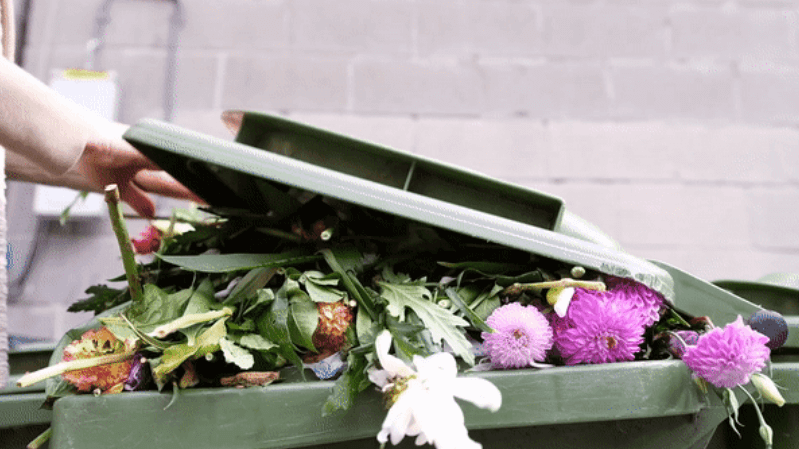Now that vivid orange, red, and purple genetically engineered petunias are approved for distribution to plant nurseries, it’s time for an accounting of the botched process followed by the US Department of Agriculture that kept these beautiful plants, and other GMO flowers, off the market for years.
Let’s go back to 2017 when USDA announced that many varieties of petunias had to be withdrawn from distribution and destroyed, solely because the harmless—but strikingly beautiful—flowers had not run the required regulatory gauntlet to be ‘approved for sale’.
Why do petunias require a government seal of approval? The answer is that they shouldn’t. The beautiful colors were the result of a harmless process of gene tweaking using highly precise and predictable molecular techniques (recombinant DNA technology) for genetic modification. But hat turned them into ‘GMOs’—the scourge of anti-biotechnology activists and the target of functionaries in Washington who are always alert to opportunities to arrogate to themselves new regulatory responsibilities.
Why the 2017 ban?
Government officials readily acknowledged in 2017 that GE petunias posed no threat to human health or the environment—and likely were sold, under the radar, for years in the US and throughout Europe (to no particular effect other than beautifying gardens). Nevertheless, as a manifestation of sheer bloody-mindedness, regulators directed sellers to destroy the flowers, simply because they didn’t have a permit—which the USDA would not issue for genetically engineered flowers without copious testing and bureaucratic red tape that could cost tens of millions of dollars and take many years.

In January of 2021, four years later, USDA finally approved, or ‘deregulated,’ the genetically engineered petunias. Now their availability in the US will be up to the plant breeding company that was granted approval, not to anonymous bureaucrats in Building 13 at the Agriculture Department. (It is noteworthy that Canada approved them for sale three years ago.) Look for them in the US in spring 2022, breeders say.
“This is the culmination of two-and-a-half years of work on behalf of our breeders and the U.S. government,” said Christian Westhoff, President of the German plant breeding company which has already developed varieties. “This marks a milestone, not only for Westhoff and our partners, but our entire industry, as we move forward into a new era of plant breeding and variety development.”
Maybe, maybe not. Aside from those specifically approved by USDA in January, “other petunia varieties developed using genetic engineering remain subject to APHIS regulation,” according to a USDA April update. So, four years after Petunia-Gate, the approval process remains unnecessarily cumbersome and expensive.
USDA’s January 2021 announcement listed the hoops that the petunias’ developers and regulators had to jump through: a 50-page petition from the plant breeder; a 65-page environmental assessment by USDA; a 15-page “Finding of No Significant Impact” on the environment, prepared by USDA to satisfy the National Environmental Policy Act; a 34-page “Plant Pest Risk Assessment” from USDA; and finally, a mercifully short “Final Determination of Nonregulated Status.”
Note that none of these would be required for new varieties of petunias created with less precise, less predictable, “conventional” (that is, pre-molecular) techniques of genetic modification, as has been done by plant breeders and home gardeners for centuries.
How did this situation come about?
Creating unnecessary bureaucracy
In short, petunias became submerged in the federal government swamp. Frank Young, the Food and Drug Administration Commissioner during the George H.W. Bush Administration, used to quip, “Dogs bark, cows moo, and regulators regulate.” Nowhere has that tendency toward bureaucratic expansionism and empire-building been more evident than in the creation of biotechnology regulations, which began to proliferate during the 1980s.
In an attempt to curb federal agencies’ temptation to create superfluous new bureaucracies to regulate the molecular techniques of genetic engineering, the White House Office of Science and Technology Policy in 1992 published what became known as the “Scope Document” to establish narrowly targeted, risk-based oversight by various federal departments and agencies. The essence of the Scope Document:
- “A risk-based, scientifically sound approach to the oversight of planned introductions of biotechnology products into the environment that focuses on the characteristics of the biotechnology product and the environment into which it is being introduced, not the process by which the product is created”;
- “Exercise of oversight in the scope of discretion afforded by statute should be based on the risk posed by the introduction and should not turn on the fact that an organism has been modified by a particular process or technique”; and
- “Oversight will be exercised only where the risk posed by the introduction is unreasonable, that is, when the value of the reduction in risk obtained by additional oversight is greater than the cost thereby imposed. The extent and type of oversight measure(s) will thus be commensurate with the gravity and type of risk being addressed, the costs of alternative oversight options, and the effect of additional oversight on existing safety incentives.”
These principles were eminently reasonable, scientifically defensible and risk-based. As early as 1989, there had been a widespread and long-standing consensus in the scientific community that the molecular genetic engineering techniques are more precise and predictable than older, conventional techniques. Although there is no rationale for case-by-case reviews of genetically engineered products of de minimis risk, USDA has continued that costly and dilatory policy.
USDA under the microscope
The saga of USDA’s regulation of new plant varieties (such as genetically engineered petunias) illustrates what happens when unscientific, excessive regulation is mixed with bureaucratic empire-building. An example is USDA’s response to my op-ed, “Attack of the Killer Petunias,” written during the height of 2017 fiasco, which represents the culmination of a kind of bureaucratic trifecta surrounding the regulation of genetically engineered plants.
The three elements represent the apotheosis of cluelessness and incompetence: the flawed policy itself, which categorically ignores the principles articulated in the Scope Document; the 2017 enforcement action in response to the distribution of unapproved petunias, pursuant to that policy; and a letter from USDA to the editor of the Wall Street Journal.
My op-ed described how the policy, combined with bureaucratic injudiciousness at APHIS, gave rise to an utterly asinine decision: USDA regulators demanding the destruction of vast numbers of at least 50 varieties of strikingly beautiful, vivid-hued petunias—not because they posed any sort of danger to health or the natural environment, but because they were technically in violation of unscientific, misguided, 30-year-old government regulations. The flowers, you see, were crafted with modern, molecular genetic engineering techniques.
Mind you, by 2017, those petunias, developed more than two decades earlier, had been sold unnoticed and uneventfully for many years. Their pedigree was only serendipitously discovered by a Finnish plant scientist who noticed them in a planter at a train station in Helsinki, Finland, and became curious about their unusual color. (He picked one and confirmed in his own laboratory that they were, indeed, genetically engineered, and tipped off Finnish regulators, who then spread the word internationally.)

Why was there any concern about what anti-biotechnology critics dubbed ‘killer petunias’? A brief primer on regulation can help us understand how this absurd situation came about. APHIS had for decades regulated the importation and interstate movement of organisms (plants, bacteria, fungi, viruses and others) that are plant pests, which were defined by means of an inclusive list—essentially a binary “thumbs up or down” approach. A plant that an investigator wished to introduce into the field was either on the prohibited list of plant pests, and therefore required a permit, or it was exempt. (Petunias are not on the list.)
This straightforward approach is risk-based, in that the organisms required to undergo case-by-case governmental review are an enhanced-risk group (organisms that can injure or damage plants), as opposed to organisms not considered to be plant pests. But since the 1980s, this process has had an evil twin: a regime focused exclusively on plants altered or produced with the most precise genetic engineering techniques if they contain even a snippet of DNA from a plant pest.
The original concept of a plant pest, something known to be harmful, has been tortured into a new category: a “regulated article.” For decades, virtually every plant modified with molecular techniques has met this definition and been required to undergo a lengthy case-by-case review, regardless of potential risk. (After many thousands of expensive, dilatory reviews, not a single one has been found to be a plant pest.)
Under this paradigm, which only an empire-building regulator could love, the genetically engineered petunia varieties, with names like Trilogy Mango, Trilogy Deep Purple, and African Sunset, became “regulated articles” because they contain a non-infectious, tiny snippet of DNA from cauliflower mosaic virus, an organism officially classified as a plant pest.
Regulators’ zealotry boosts development costs and stifles innovation
Petunias are not the only GE flower to come face-to-face with the federal bureaucracy. The National Agriculture and Food Research Organization in Japan and the biotech company Suntory has invested billions of yen in the creation of true blue chrysanthemums, which are naturally pink or red. After conventional breeders spent decades failing to create blue blooms, The team engineered the blue chrysanthemums by inserting genes that stimulate the synthesis of blue pigment from two other blue-flowering plants: butterfly peas and Canterbury bells. The gorgeous innovation was hailed around the world—except by the USDA, which rejected their import in 2018.
Regulators have long since acknowledged that there’s no plausible expectation of harm to human health, animals or the environment from the chrysanthemums or petunias. They were targeted simply because they were created with highly precise molecular genetic engineering techniques, which requires a permit for their field testing and commercialization.
Genetically engineered plants have faced unnecessary regulations imposed on harmless and even beneficial plants for more than 30 years. That comes with a price. APHIS’s regulatory hoops have pushed the cost of bringing a genetically engineered crop to market to an average of $136 million. And that doesn’t take into account the vast number of bureaucrat-hours expended on gratuitous paper-shuffling. That’s far too expensive to justify pursuing commercialization for an ornamental flower variety.
The last element of the bureaucrats’ trifecta is particularly disturbing. Slightly over a month after my 2017 op-ed appeared, the Wall Street Journal received a request from USDA for a “correction.” I had suggested that instead of demanding that the illegal petunias be destroyed, the regulators should either ask distributors to donate the contraband flowers to pediatric cancer wards or simply announce that they would exercise “enforcement discretion” and forego enforcement actions entirely. That prompted this response:
APHIS never asked, much less ordered, anyone to destroy genetically engineered (GE) petunias. Rather, it is our understanding that certain distributors asked their downstream commercial customers to destroy plants. APHIS has no opposition to the industry’s decision to seek the voluntary destruction of these plants; however, APHIS did not request, nor recommend, that consumers destroy GE petunias in their possession, including any petunias already planted.
However, those claims are contradicted by USDA’s own published statements. For example:
- According to a “news item” published by USDA [now deleted from the USDA website], “APHIS is working in close cooperation with breeders and growers represented by the American Seed Trade Association (ASTA) and AmericanHort to ensure the implicated GE petunia varieties are withdrawn from distribution.”
- In another published document, “APHIS Guidance Regarding the Destruction of Potential Genetically Engineered Petunias,” USDA made its position clear: “The Plant Protection Act gives the United States Department of Agriculture (USDA), Animal and Plant Health Inspection Service (APHIS) the authority to regulate genetically engineered (GE) organisms that may present a plant health risk, referred to as ‘regulated articles’. APHIS’ Biotechnology Regulatory Services (BRS) regulates the introduction–meaning the importation, interstate movement, and environmental release–of GE organisms that may pose a pest risk to plants under APHIS’ biotechnology regulations at 7CFR part 340…BRS has learned that GE petunias have been imported, distributed, and grown in the United States without appropriate authorization. GE petunias are regulated articles.” That document lists the names of 50 petunia varieties (as of that date) that fall “under regulatory authority of CFR part 340.”
Here’s the kicker from that second document:
This document serves as guidance to industry regarding how to destroy GE and potential GE petunias consistent with the regulations at 7CFR part 340.
Any of the following methods may be used to destroy potential GE petunia plants if no seed [sic] are present. . . [emphasis added]
Those specified methods of destruction—for petunias that everyone agreed were completely harmless, mind you—include double-bagging and incinerating or “burial under a minimum of one (1) foot of soil.” And if you have seeds, you can grind them into oblivion.
Moreover, contrary to APHIS’s letter to the Wall Street Journal, nowhere did my op-ed make any mention of “consumers destroy[ing] GE petunias in their possession” (emphasis added).
Thus, USDA’s own published statements clearly contradict their complaints. Perhaps the officials who composed it were trying to avail themselves of the old inside-the-Beltway maxim that something said three times becomes a fact.
‘Bureaucratic self-interest, stupidity, and dishonesty’
The epilogue to this story is that the USDA has now approved or “deregulated” the petunias, after four years of superfluous jumping through hoops by the petunias’ breeder and USDA bureaucrats.
From beginning to end, this sorry saga of bureaucratic self-interest, stupidity, and dishonesty exemplifies the fetid swamp of federal regulation. It also illustrates the need to replace USDA’s technique-focused approach to genetically engineered plants with one that is scientifically defensible and risk-based, proposals for which have been made by academics for decades (such as here and here).
As addressed in my WSJ op-ed, the technique-based regulatory net—which has been in place for more than 30 years—makes no sense and affords no protection against anything, because plants that need to be reviewed are regulated elsewhere in APHIS under the long-standing jurisdictions of the Plant Protection Act and the Noxious Weed Act.
In other words, “regulated article” is a red herring that should be gutted and discarded. Much like APHIS’ Biotechnology Regulatory Services bureaucracy itself.
Acknowledgement: The author would like to thank Jon Entine for his numerous excellent suggestions on the text. This article was updated on May 26, 2021 to correct and update the regulatory context of GMO chrysanthemums.
Henry I. Miller, a physician and molecular biologist, is a senior fellow at the Pacific Research Institute. He was the founding director of the FDA’s Office of Biotechnology. Find Henry on Twitter @henryimiller


































